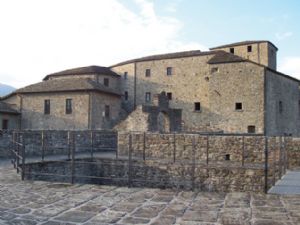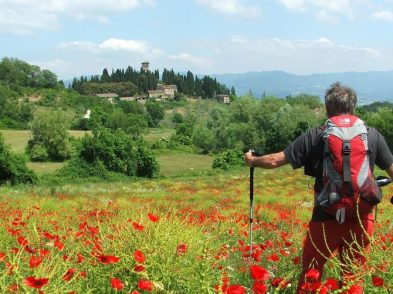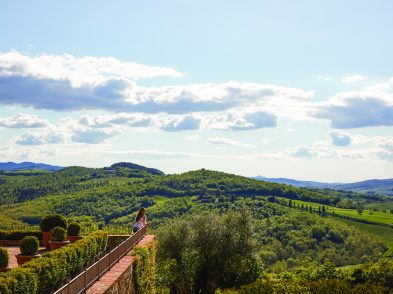Embark on a journey back through time in the midst of the Apennine mountain chain, where more than five millennia ago a mysterious pre-Etruscan population lived, surrounded by the sights and sounds of a natural world almost completely unknown to the modern experience. Although little is known of this ancient people, a group of mysterious anthropomorphic statues, called Stele statues-characterized by peculiar, half-moon shaped heads-were discovered in the historical region of Lunigiana, in northern Tuscany.
The stone Stele represent both males and females, usually depicted holding weapons or decorative objects such as jewelry. The oldest group dates to the third millennia B.C., when the manipulation of copper became widespread enough to influence local commerce and defense systems. The beginning of a metal age, marked first by the use of copper and then bronze and iron, is marked by a complex, semi-nomadic society dominated by hierarchical social patterns, the rise of fortified cities and robust commercial routes through the valleys of the Apennines, in particular the Magra valley in Lunigiana.
It is in several of these strategic locations, along rivers and in mountainous areas, that the Stele have been unearthed. Interestingly, it appears that they are not limited to Lunigiana: other statues with similar characteristics have been found as far to the north as the Black Sea, in what is today the Ukraine, adding to the enigma of their raison d’etre. Some experts posit that they depict local deities; others claim that the statues represent individual authorities who wielded considerable economic and social power in their communities. As for their function, they may have been for funerary purposes; or they acted as protective images, placed at the entrances of inhabited areas of a certain economic or social prominence. Their diffusion most likely was linked to cultural exchanges across the arterial commercial routes that cut through Europe at the time.
Although there is much speculation surrounding the Stele, one thing is certain: the millenary veil that envelopes them adds to their mystery. Whether they represent deities connected to the natural order (the half-moon heads) or are simply depictions of individuals from a rising social class, their legend haunts the valleys and forests of Lunigiana.
Draw your own educated conclusions about the origins of these fascinating megaliths by visiting the Castello del Piagnaro in the medieval town of Pontremoli in northern Tuscany, which holds the most comprehensive and well-preserved group of Stele from Lunigiana. The museum, open year round, is closed on Mondays. For more information, see www.statuestele.org (in English and Italian) or call 0187/831439. Watch a video on the Stele statues at http://www.istitutovalorizzazionecastelli.it/multimedia02.htm (in Italian).
Getting there: Five direct trains go from Santa Maria Novella train station to Pontremoli daily.Side trip: After visiting the Castello del Piagnaro and the Stele museum, fast forward to the Christian calendar and follow the route of spiritual pilgrimage, the Via Francigena, which cuts through Pontremoli and the Magra valley; it originally connected the city of Canterbury, in England, to Rome. A hostel in the castle was established to welcome pilgrims walking along the Francigena. It can accommodate 60 people and is open year round.







